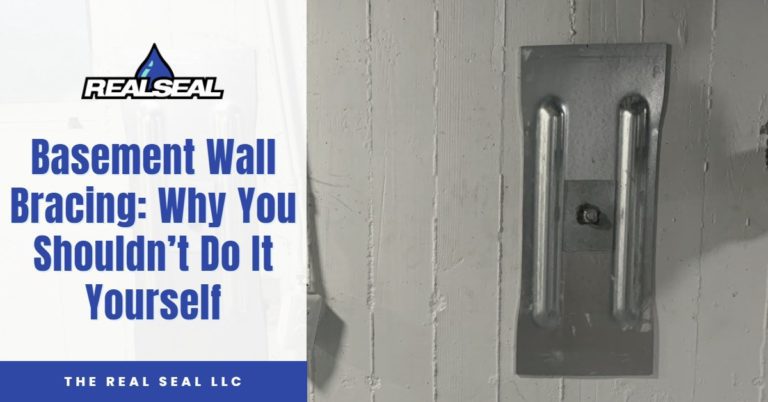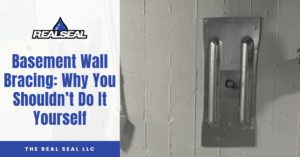If you’re thinking about basement wall bracing and wondering if you can do it yourself, this is the article for you. Find out what experts think about doing it yourself, along with different professional basement wall bracing solutions.
Basement Wall Bracing: Why You Shouldn’t Do It Yourself
Professionals do not recommend DIY basement wall bracing. If done incorrectly, you could seriously damage your basement walls, which in turn can damage the rest of your home. Here are some of the most common issues with DIY solutions.
- You could break your basement wall.
- You could overtighten the wall and pull it too far outward.
- You could use an incorrect amount of braces or fail to space them evenly.
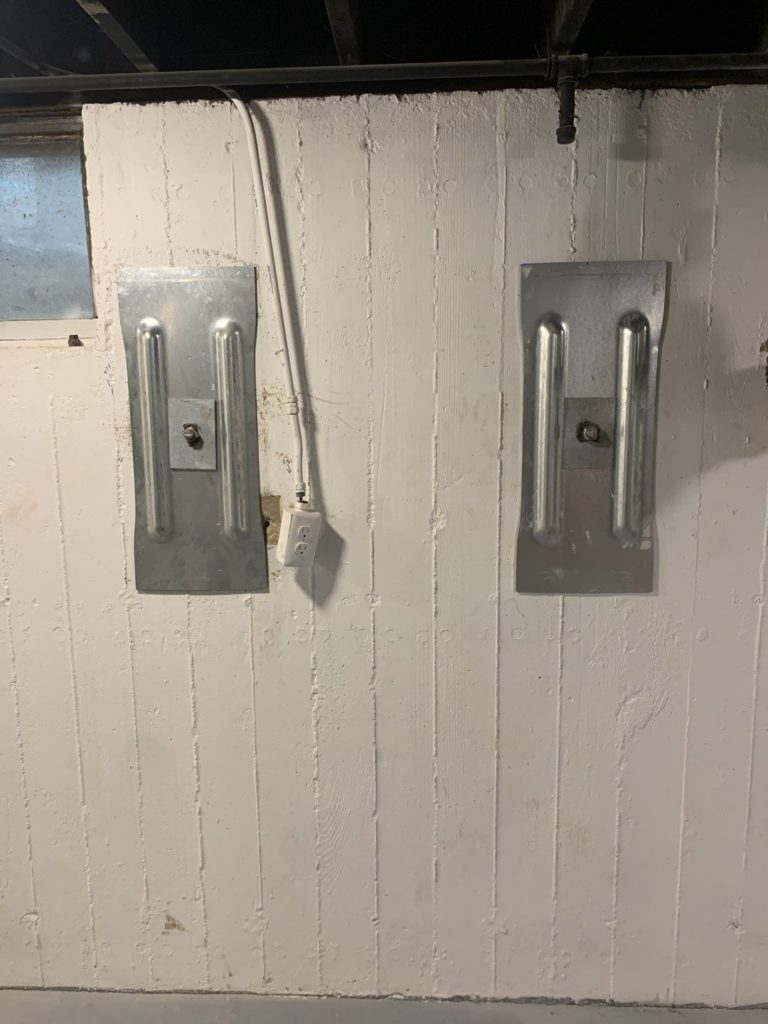
Sometimes, professionals will have to correct mistakes that homeowners or other contractors make. For example:
- They didn’t use enough wall plates.
- They didn’t anchor the plates into the yard well enough or far enough from the home. Anchors need to be at least 13 feet from the wall.
- They didn’t lift the weight of the home off the wall before lifting.
- The previous contractor left the homeowner to self-tighten the plates (this should be done by professionals).
What Is Basement Wall Bracing?
Basement wall bracing is for correcting bowing walls. “Bowing” means that your basement wall is curving inward, like an archer’s bow. Bracing solutions such as wall plate anchors help pull bowing walls outward. Here’s how wall plate anchors work.
- Contractors dig around your foundation to allow the bowing wall to move.
- A trench is dug 13 feet away from your wall. That’s where the outside anchors will be placed.
- If the wall is broken into many pieces, carbon fiber straps are installed so that the entire wall moves when the anchors tighten.
- Holes are drilled through the bowing wall to allow access for the threaded high-strength rod.
- The rods are slid through the wall, reaching the trench 13 feet away.
- Hydraulic jacks are used to lift your home up and take pressure off the wall so that it can move easier.
- The inside plates are attached to your wall and connected to the high-strength rod.
- The plates are tightened using a torque wrench. The bolts are turned until your wall starts to pull outward.
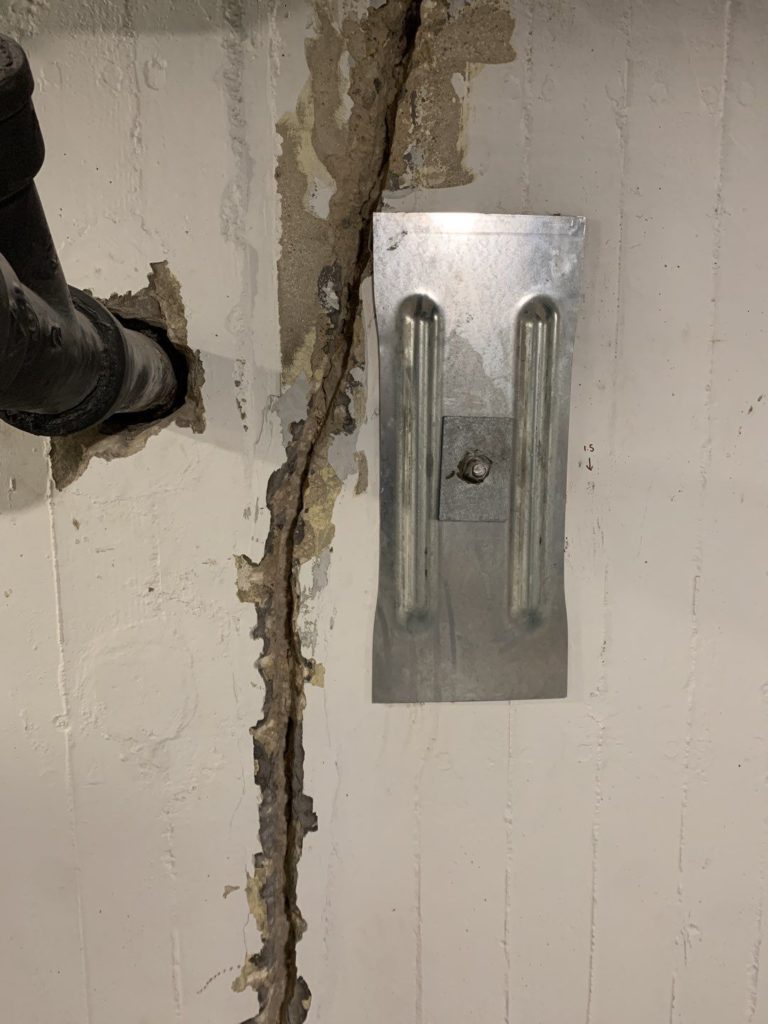
Other Professional Basement Wall Bracing Solutions
Below are other types of basement wall bracing solutions that help counter bowing walls.
C-channel Anchors
These anchors are commonly used to correct sheering walls (the top of the basement wall has moved inward while the bottom part of the wall stays put). C-channel anchors work in four steps.
- A large steel beam is attached to the bowing wall (placed every 4 to 5 feet from the middle of one beam to the next).
- An outside anchor is placed in the soil at least 13 feet away from your foundation.
- A threaded high-strength rod connects the steel beam to the anchor.
- The steel beam is anchored to your basement wall footer.
Fortress Invisibeam Carbon Fiber Straps
For less severe bowing walls, professionals recommend using Fortress Invisibeam carbon fiber straps. Carbon fiber is an extremely strong material that doesn’t stretch and is virtually unbreakable. You can even hide them from sight with just a little paint. Here’s how they work.
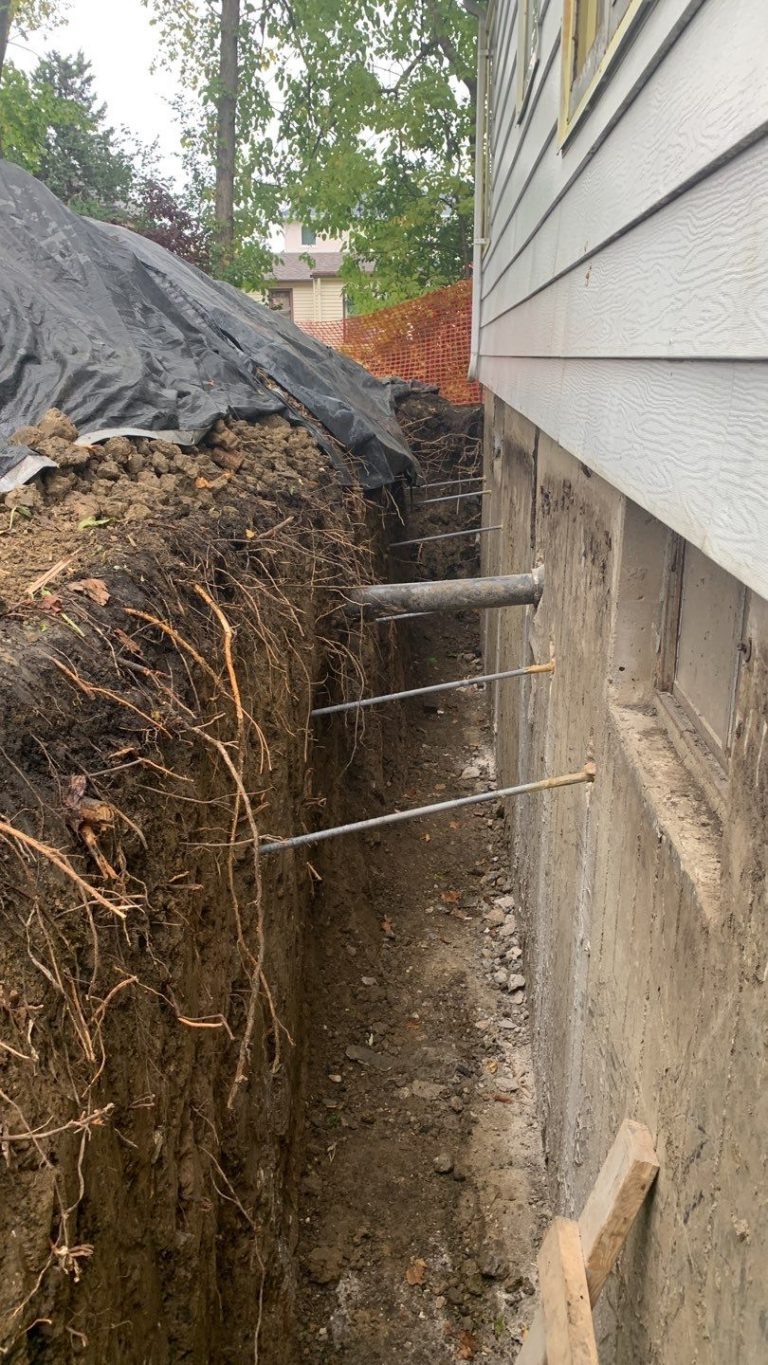
- A galvanized bracket is anchored to the top of your house frame.
- The carbon fiber strap is placed across the bowing wall.
- The strap is anchored to your basement footer.
Fortress Invisibeam carbon fiber straps are some of the best in the industry. These straps can repair walls that have leaned or bowed inwards up to three inches. Other straps can only correct movement up to two inches. The warranty on Fortress Invisibeam straps comes with a lot of perks. For example, The Real Seal is able to warranty that if the wall fails, we will fix it. That includes replacing the entire wall.
Helical Tieback Anchors
Helical tieback anchors are a little different than wall plate anchors. Instead of placing an outside anchor in your dirt, the anchor is drilled from inside your bowing basement wall. The anchor works like a corkscrew, and as it twists, it pulls your wall outward. These anchors are perfect for basements that have limited interior or exterior access. It’s important to note that The Real Seal does not offer helical tieback anchors.
Why Would You Need Basement Wall Bracing?
Why is your basement wall bowing? Well, it could be because of a couple of reasons.
- Expansive soil – If the soil around your basement walls is made of a lot of clay, it can be considered expansive soil. This type of soil grows and shrinks based on moisture content. When the soil absorbs water, it expands. Then, when the soil dries, it shrinks. The constant growing-shrinking cycle places stress on your basement walls and can cause them to bow.
- Hydrostatic pressure – Hydrostatic pressure is when water pools up outside your basement wall and has nowhere to go. As the water builds up, the volume of the soil increases. This increase places pressure on your basement wall and can cause them to bow.
- Frost-heaving – If the soil freezes outside your basement wall, there’s a chance it can lift up. Then, when the soil thaws, the soil settles back down. This up-and-down movement can cause your basement walls to bow.
- Lateral pressure – If something heavy is placed outside your basement walls, such as a dump truck, it can press down on the soil and cause your basement walls to bow.
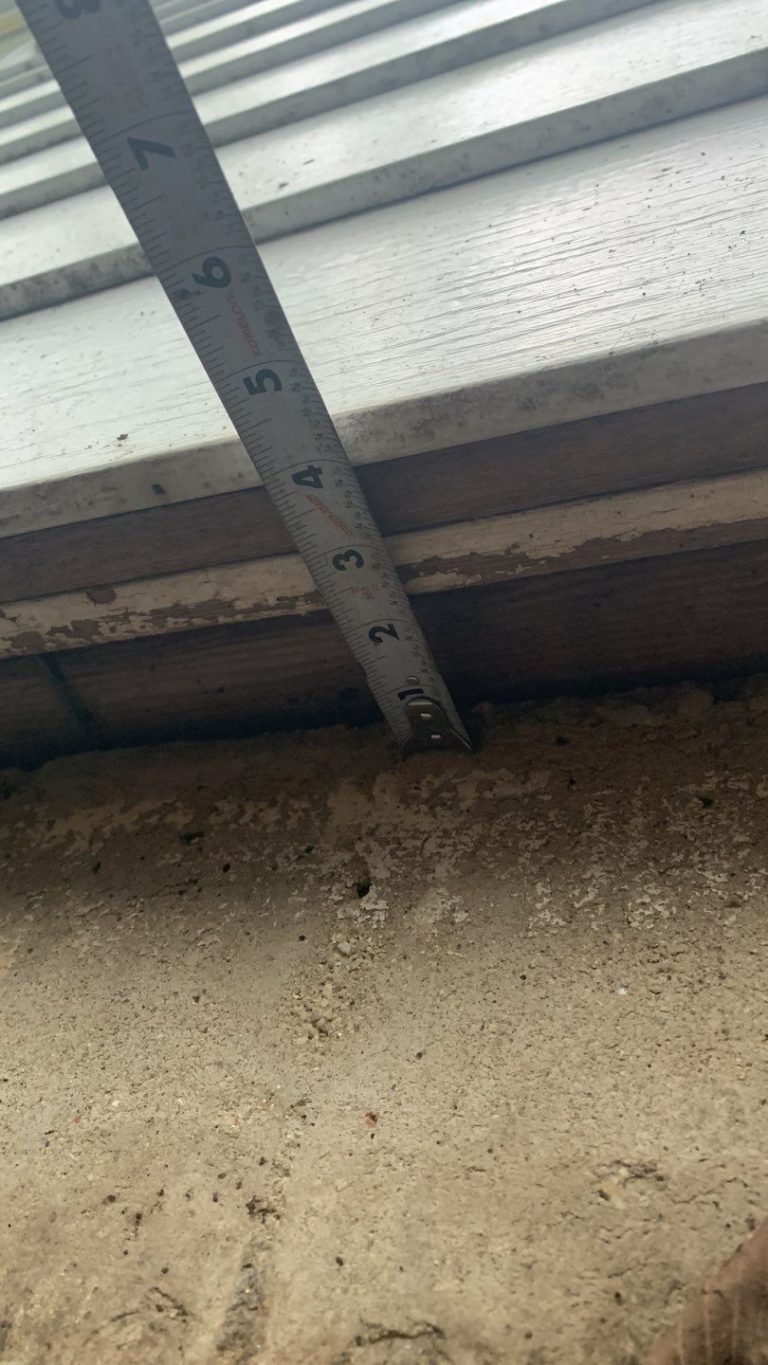
The Real Seal
If you live in the Greater Chicago area and need basement wall bracing, call The Real Seal. We’ll get you started with an in-depth inspection, free repair estimate, and a list of our finest solutions. We also provide basement waterproofing, crawl space encapsulation, crawl space repair, concrete leveling, and more. Bowing foundation walls are serious. Call today!
